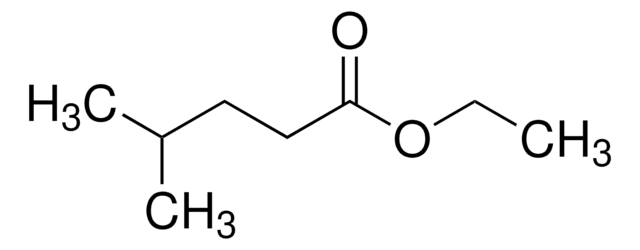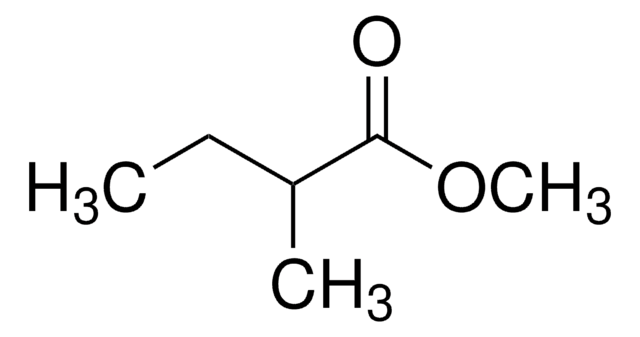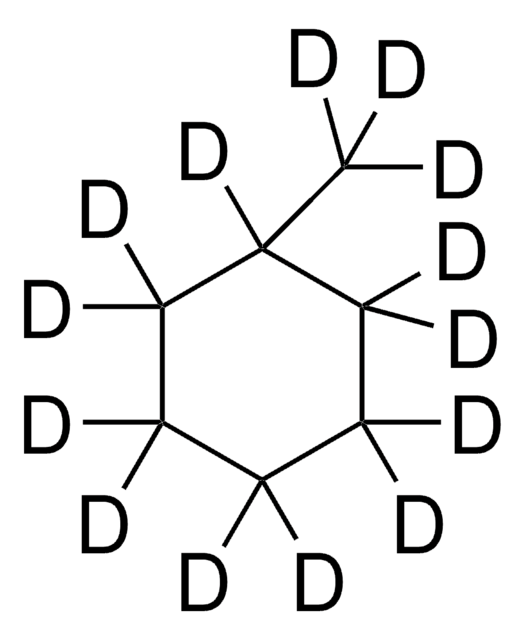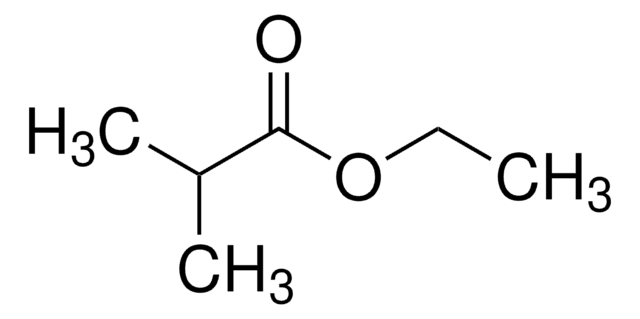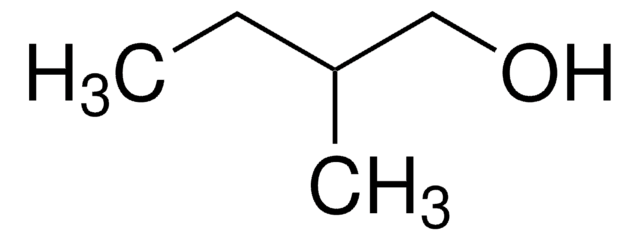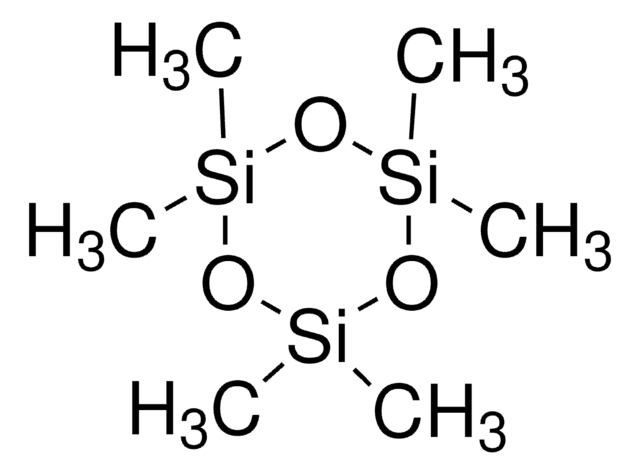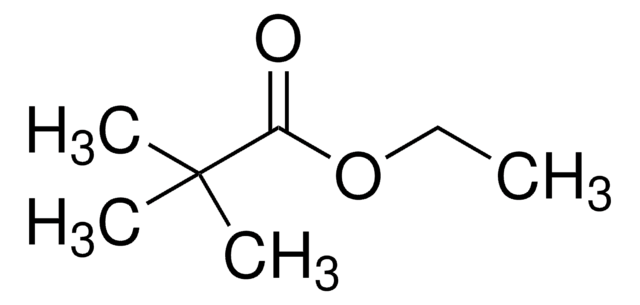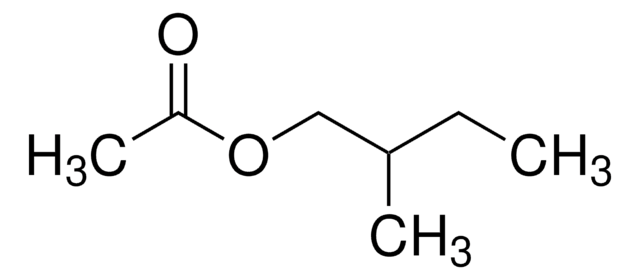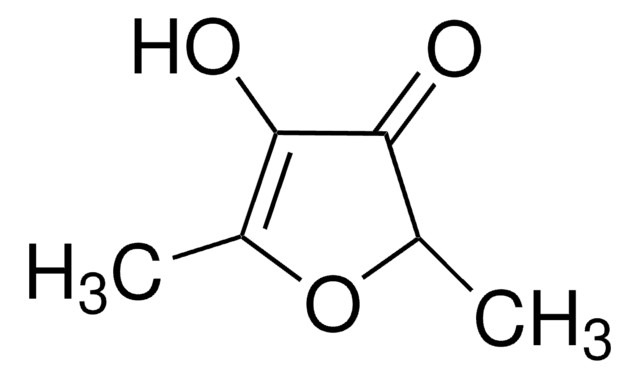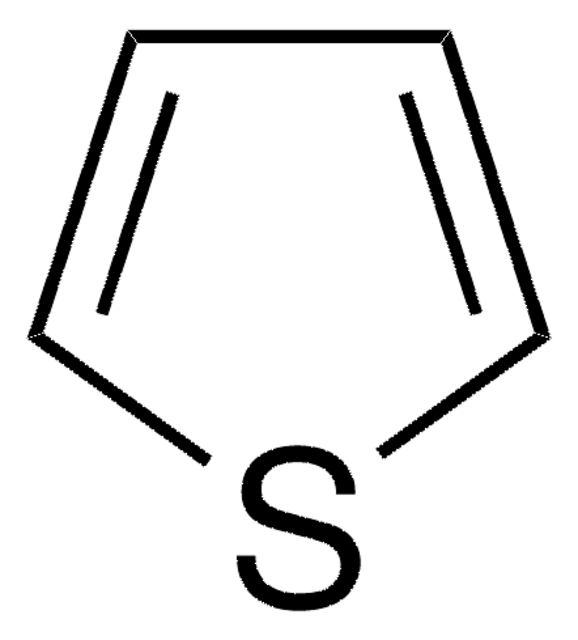All Photos(2)
About This Item
Linear Formula:
CH3CH2CH(CH3)COOC2H5
CAS Number:
Molecular Weight:
130.18
Beilstein:
1720887
EC Number:
MDL number:
UNSPSC Code:
12352100
PubChem Substance ID:
NACRES:
NA.22
Recommended Products
Quality Level
Assay
99%
form
liquid
refractive index
n20/D 1.397 (lit.)
bp
133 °C (lit.)
density
0.865 g/mL at 25 °C (lit.)
SMILES string
CCOC(=O)C(C)CC
InChI
1S/C7H14O2/c1-4-6(3)7(8)9-5-2/h6H,4-5H2,1-3H3
InChI key
HCRBXQFHJMCTLF-UHFFFAOYSA-N
Looking for similar products? Visit Product Comparison Guide
Related Categories
General description
Ethyl 2-methylbutyrate is one of the key constituents of the aroma of baked wines. It is also a potential contributor to the aroma of fresh strawberry.
Signal Word
Warning
Hazard Statements
Hazard Classifications
Flam. Liq. 3
Storage Class Code
3 - Flammable liquids
WGK
WGK 1
Flash Point(F)
78.8 °F - closed cup
Flash Point(C)
26 °C - closed cup
Personal Protective Equipment
dust mask type N95 (US), Eyeshields, Gloves
Certificates of Analysis (COA)
Search for Certificates of Analysis (COA) by entering the products Lot/Batch Number. Lot and Batch Numbers can be found on a product’s label following the words ‘Lot’ or ‘Batch’.
Already Own This Product?
Find documentation for the products that you have recently purchased in the Document Library.
Customers Also Viewed
Vanda Pereira et al.
Food chemistry, 162, 122-134 (2014-05-31)
The evolution of monovarietal fortified Madeira wines forced-aged by traditional thermal processing (estufagem) were studied in terms of volatiles. SPE extracts were analysed by GC-MS before and after heating at 45 °C for 3 months (standard) and at 70 °C
Yong-Hyun Kim et al.
Sensors (Basel, Switzerland), 13(6), 7939-7978 (2013-06-22)
The classes and concentrations of volatile organic compounds (VOC) released from fresh and decaying strawberries were investigated and compared. In this study, a total of 147 strawberry volatiles were quantified before and after nine days of storage to explore differences
José Manuel Muñoz-Redondo et al.
Journal of agricultural and food chemistry, 65(13), 2768-2775 (2017-03-14)
A quantitative approach using HS-SPME-GC-MS was performed to investigate the ester changes related to the second fermentation in bottle. The contribution of the type of base wine to the final wine style is detailed. Furthermore, a discriminant model was developed
Johannes Niebler et al.
Phytochemistry, 109, 66-75 (2014-12-04)
Frankincense has been known, traded and used throughout the ages for its exceptional aroma properties, and is still commonly used in both secular and religious settings to convey a pleasant odor. Surprisingly, the odoriferous principle(s) underlying its unique odor profile
Amélie Slegers et al.
Molecules (Basel, Switzerland), 20(6), 10980-11016 (2015-06-18)
Developed from crosses between Vitis vinifera and North American Vitis species, interspecific hybrid grape varieties are becoming economically significant in northern areas, where they are now extensively grown for wine production. However, the varietal differences between interspecific hybrids are not
Our team of scientists has experience in all areas of research including Life Science, Material Science, Chemical Synthesis, Chromatography, Analytical and many others.
Contact Technical Service